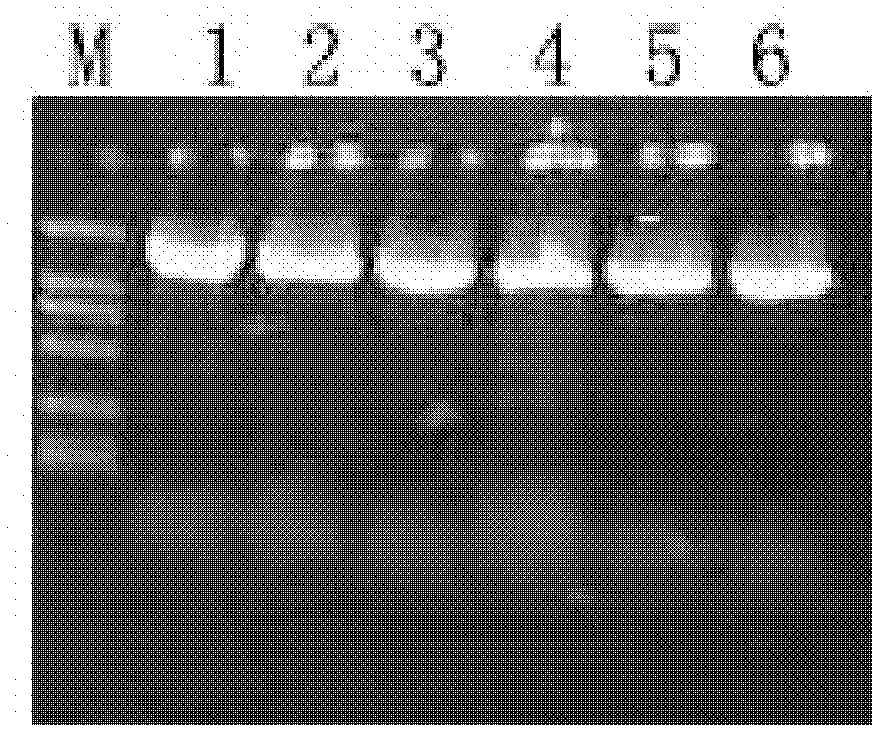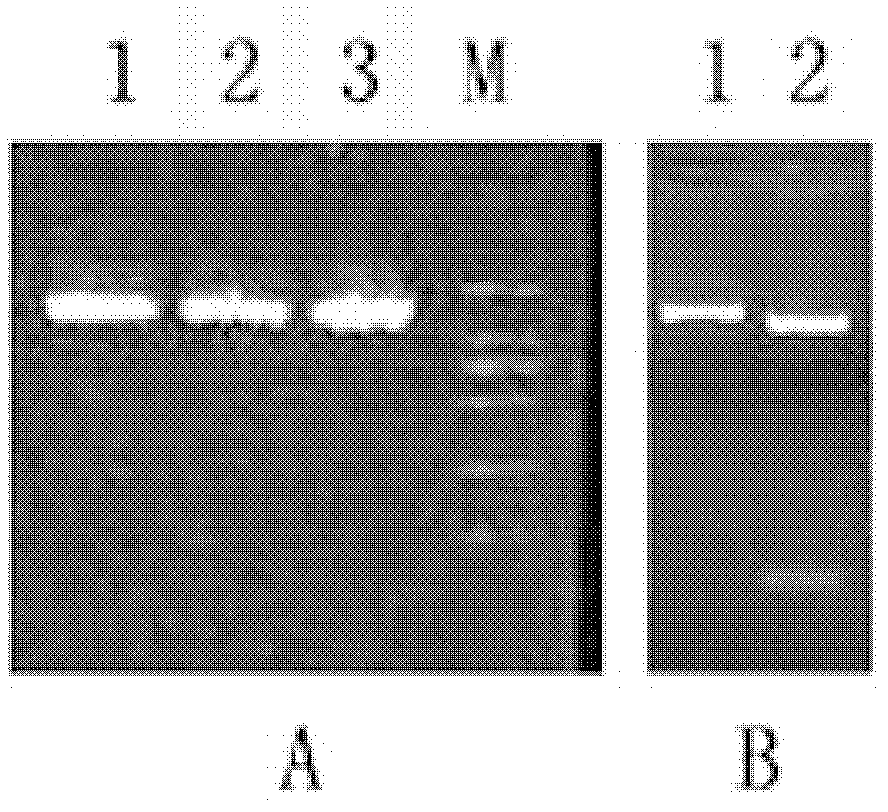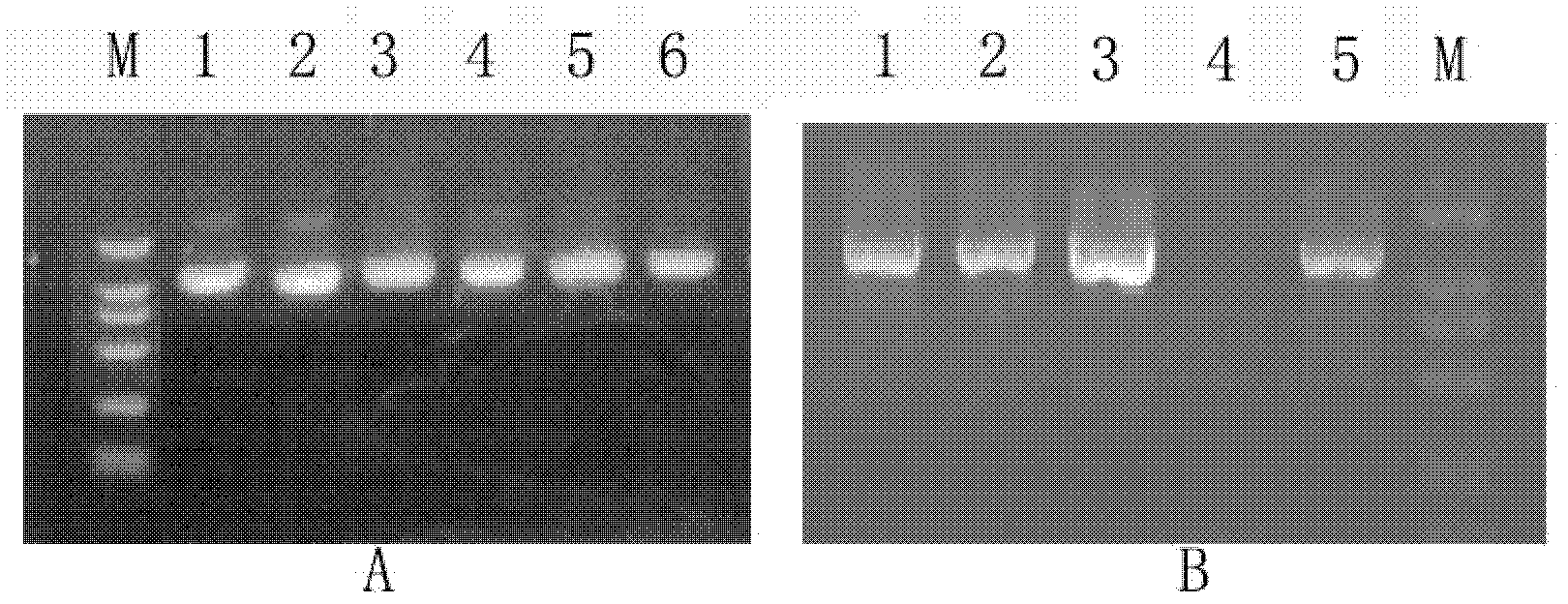Method for obtaining tomatoes with high lycopene content and resistance to bacterial wilt through recombining genes
A lycopene and recombinant gene technology, applied in the field of plant transgenic technology, can solve the problems of food safety and environmental safety concerns of genetically modified crops, and achieve the effects of eliminating the safety of genetically modified food, increasing the content of lycopene, and facilitating screening
- Summary
- Abstract
- Description
- Claims
- Application Information
AI Technical Summary
Problems solved by technology
Method used
Image
Examples
Embodiment 1
[0039] Construction of Intermediate Vector Containing PSY2 Gene
[0040] According to the published tomato PSY2 gene sequence 【1】 For EF534739, the upstream and downstream primers of the gene were designed with the biological software DNAStar, named PSY2F and PSY2R respectively, and BamHI and SacI restriction enzyme sites were introduced respectively. The primer sequences are as follows: PSY2F: 5'AAC GGATCCGTGTATCAAAGGTAAGTAAGGGAAC-3'; PSY2R: 5'ATAGAGCTCACTTGCTAGTGGGGAAGTTG-3'.
[0041] Extract the total RNA of tomato seedlings, and use this as a template to carry out RT-PCR reaction. After the recovered PSY2 gene and pBI101.2 plasmid are digested with BamHI and SacI respectively, the large fragment of pBI101.2 plasmid after digestion is recovered by gel cutting and PSY2 gene fragments were ligated overnight at 16°C with T4 DNA ligase. The ligation product was transformed into E. coli DH5α strain, and Kan-resistant clones were picked for BamHI and SacI double digestion verif...
Embodiment 2
[0044] Construction of intermediate vector containing promoter E8
[0045] According to the fruit-specific E8 promoter sequence of tomato Cherry species reported by Deikman et al., two PCR primers were designed with the biological software DNAStar, respectively E8F: 5'gCAAGCTTA GGAATTTCACGAAATCG3' introduced HindIII restriction site; E8R: 5'CgGGATCCTCTTTTGCACTGTGAATGAT3' introduced BamHI restriction site.
[0046] The total RNA of tomato seedlings was extracted and used as a template for RT-PCR reaction. After the recovered E8 gene was double-digested with HindIII and BamHI, the digested E8 gene fragment was recovered by gel cutting.
[0047] React the pMDT-18 vector with the recovered E8 fragment overnight at 16°C, transform the ligation product into E.coli DH5α, spread it on the LB medium containing Amp, pick a single colony in the LB liquid medium, and culture it overnight at 37°C, a small amount Plasmids were extracted for PCR identification. And named pMDTE8.
Embodiment 3
[0049] Construction of Intermediate Vector Containing Promoter E8 and PSY2 Gene
[0050] After the constructed pMDTE8 and pBIPSY2 plasmids were digested by HindIII and BamHI respectively, the large fragment of pBIPSY2 plasmid and the E8 promoter fragment were recovered by gel cutting, and ligated overnight at 16°C by T4 DNA ligase. The plasmid was transformed into Escherichia coli E.coliDH5α strain, and the Kan-resistant clone was verified by PCR. The recombinant plasmid successfully verified by PCR was sequenced, and the recombinant plasmid with correct connection was named pBEPSY2.
PUM
 Login to View More
Login to View More Abstract
Description
Claims
Application Information
 Login to View More
Login to View More - R&D
- Intellectual Property
- Life Sciences
- Materials
- Tech Scout
- Unparalleled Data Quality
- Higher Quality Content
- 60% Fewer Hallucinations
Browse by: Latest US Patents, China's latest patents, Technical Efficacy Thesaurus, Application Domain, Technology Topic, Popular Technical Reports.
© 2025 PatSnap. All rights reserved.Legal|Privacy policy|Modern Slavery Act Transparency Statement|Sitemap|About US| Contact US: help@patsnap.com



